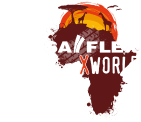


XWORLD 2008-2009 | 2011-2012 | GTC | Contact | Imprint
News Stages Tour Diary Performances Amaroks Booking Request Catalog
XWORLD AFRICA tour diary Stage 18
previously
Travel report overview

















<
>
Day 1:
After a long flight, we land at Kilimanjaro International Airport in Tanzania. During the transfer to our lodge, we are able to gain our first impression of African traffic. While there don’t really appear to be any rules, everyone drives considerately.
In the evening, our guide Matthias goes through our route around Lake Victoria – the anticipation mounts!
Day 2:
We load the Amaroks and set off for the Kenyan border along good, tarmacked roads. The crossing proves rather chaotic, as a new border station is currently being built and the old access road has already been removed to make way for the construction work. We still manage to complete the formalities to enter into Kenya quickly. As it is still early, we decide to visit Nairobi National Park. We enjoy our first sightings of African wildlife with views over the skyline of the million-inhabitant metropolis and even spot a rhinoceros. The drive through the heavy city traffic to our hotel is also an adventure.
Day 3:
We set off early to avoid the morning traffic chaos. The journey out of Nairobi takes us ever higher until we reach the Great African Rift Valley. At just 10°C, the temperature is remarkably low. Light drizzle intensifies the feeling of being somewhere in Scotland and not at the equator that we crossed just a few kilometres earlier.
After crossing the equator, we travel along a stony mountain track down into Rift Valley. The Amaroks are finally able to show what they were really made for here. We drive for hours along muddy tracks through little villages. We only reach our guest house in Kitale at dusk. Our host has already prepared a campfire and we bring the evening to a pleasant close.
Day 4:
Our first destination of the day is Mount Elgon National Park. Dense rainforests characterise this nature reserve located on the border with Uganda. The vehicles travel ever higher up a barely visible track. We are treated to wonderful views over the natural wilderness time and time again. Because we want to cross over the border into Uganda today and still have a fair few kilometres ahead of us on the other side, we turn around at around 3,000 metres and head for the border.
The officials at this small border crossing are very friendly and the formalities are completed without a hitch. We are granted entry despite not having a Ugandan visa sticker and hope this will not be a problem when we come to exit the country again.
According to the villagers, it will take five hours to complete the remaining 160 kilometres of today’s journey. We are somewhat sceptical – they don’t know our Amaroks – and so expect to arrive at the hotel early. Big mistake: we are met by a dirt track that winds through the mountains. Shortly after crossing the border, a storm turns it into an absolute mud bath. One brief moment of inattention and the vehicles can end up in a ditch. We make extremely slow progress and take six hours to reach the hotel in the end.
Day 5:
After yesterday’s mud bath, we are looking forward to the excellent tarmacked road to the north-east. We already reach the entrance to Murchison Falls National Park at around midday and are able to take a back road through the park instead of the main road. The detour is by all means worthwhile: we spot a large herd of buffalo, countless giraffes, gazelles, zebras and even a herd of elephants in the distance. We stop for lunch at a beautiful spot beside the Nile and enjoy the views over the rapids and hippos. One small park resident was less pleasant though: the tsetse flies were thirsty for our blood.
The lodge’s manager would also benefit from a few lessons in hospitality, but we do not let her spoil our evening and sit together for a long time.
Day 6:
Today, we have the morning off. A few of us set off early for Murchison Falls to observe the wildlife. The Nile that is normally several hundred metres wide narrows here to pass through a gap just seven metres in width. We meet up again later in the day for a boat trip up the Nile to see the huge crocodiles and hippos close up. Our onward drive leads through dense jungle out of the park as we follow the river’s course east towards Lake Victoria, which is considered the source of the Nile.
We overnight in the wonderful The Haven lodge with views over the Nile rapids. We only get to bed late again tonight.
Day 7:
We enjoy a leisurely start to the start, have a hearty breakfast, relax and rewind. Then its show time: we drive south and must pass right through the centre of the Ugandan capital of Kampala. The traffic is very tough but straightforward – there is no trace to be found here of the easy-going African attitude that characterised the traffic in Nairobi! We are cautioned by the police when we take the traffic rules a little too lightly at a junction.
We eventually leave the traffic behind us, and arrive at our campsite on a panoramic mountain in the south of Uganda in the evening.
Day 8:
Matthias already prepared us for our marathon day at the briefing on the first evening: 700 kilometres, a border crossing and a ferry. Today we must make good headway. We set off shortly after sunrise and manage to greatly shorten our route by taking a small back road. The border formalities to cross back into Tanzania are completed very quickly; it only takes a while to be issued road toll forms.
We reach the shores of Lake Victoria on good, tarmacked roads and continue eastwards. We arrive at the ferry that will take us across to our destination of the day, Mbale, shortly before sundown. At the hotel, we are rewarded for our successful day of driving with a tasty selection of Indian specialities.
Day 9:
After our epic journey the previous day, we are able to take some time for one of the tour highlights today: our destination is a safari camp at the heart of the Serengeti. Unfortunately, it takes quite some time to register to enter the national park – something that we hadn’t expected of a world-famous tourist attraction. Tanzania and bureaucracy appear to be synonymous though ...
We travel along a horrific gravel track into the savannah and prove lucky: the huge herds of gnus are migrating to the fertile north slightly later than usual this year and we are also able to observe countless other animals in addition to the hundreds of gnus. It is like Africa out of the picture books. Because there is no exact information on the location of our camp or even GPS coordinates, trying to locate the camp reminds us of the communication exercises from management training courses: we fan out in different directions with the Amaroks and are guided to our accommodation via radio.
Day 10:
We set off on our wildlife safari before sunrise and are rewarded for the early start: we spot lions, elephants and even a cheetah dragging a gazelle into a tree. After a hearty breakfast at the camp, we drive on to Ngorongoro Crater. Today’s track is worse than the most grooved of corrugated iron. We arrive at the park boundary jolted to the core. We are no longer surprised that the formalities here are more elaborate than those at most country border crossings.
After enjoying the overwhelming views from the edge of the crater, we head down a steep track to the animal paradise of Ngorongoro. We want to spend the day here and each of us to explore this unique place under our own steam. Shortly before sunset, we head back up to the crater rim and spend the night here in a coffee plantation amidst fertile virgin forests.
Day 11:
After two relaxing days, another marathon stage all the way to the Indian Ocean lies ahead of us today. The first 200 kilometres drag; the traffic is very heavy and we pass through village after village. If this continues, we will only reach our destination late at night. It also appears to be national traffic safety day, as we come upon a police check every few kilometres. In the afternoon, we make good headway on good, tarmacked roads and the drive with views over the Usambara Mountains is both varied and interesting. The traffic police finally catch up with us shortly before we reach our destination for the day: two Amaroks are directed to pull over after passing a well-concealed radar control point. The officers are friendly and efficient – and certainly deserve the fine they request for the well-placed radar control point.
Our lodge lies almost directly beside the Indian Ocean. Unfortunately it is low tide though and dense mangroves block access to the sea. We are surprised to learn that the lodge specialises in Italian specialities and order our evening meal à la carte. After countless beers but still no sign of our food, we begin to doubt whether this was such a good idea. When the tasty dishes do arrive, they certainly make up for the long wait.
Day 12:
We take the final 300 kilometres of our discovery tour at a leisurely pace. A narrow mud track through small villages back to the main road is our last stretch of off-road. We already reach our hotel in time for lunch. Hotel Mediterraneo, which is located beside a pretty sandy beach this time, lies on the outskirts of Dar es Salaam. We bring our wonderful trip to a pleasant close with a delicious dinner directly beside the Indian Ocean. It was fantastic.
Day 13:
Some of the group extend their stay to spend a few days on Zanzibar, however most return to Germany over the course of the day. The two weeks went far too quickly.
Copyright 2007-2013 HANSA-FLEX AG © 2007-2015
XWORLD 2008-2009 | 2011-2012 | GTC | Contact | Imprint

